DealerGavel Auction Portal
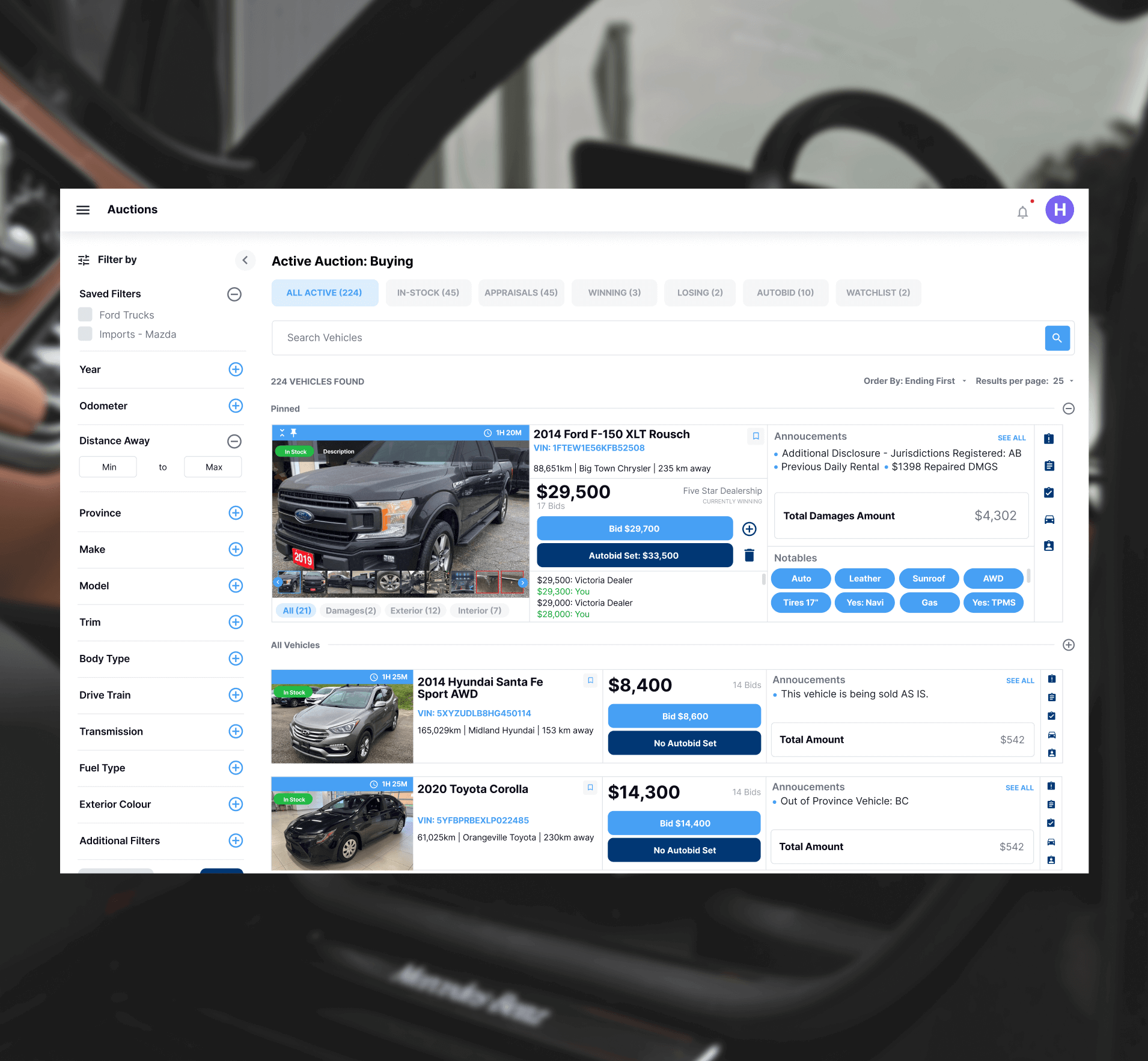

Building an auctioning platform involved addressing a wide range of technical and logistical challenges. Specialized knowledge about the industry was important for the creation of user flows and for determining efficient layouts that were deeply user-centric. This meant tons of discussion and tight collaboration with the client followed by an in-depth analysis of competitors. The creation of user flows established the main goals of the platform:
Sellers need to be able to easily add, edit, and manage their inventory quickly. Ensuring the accuracy and integrity of vehicle listings is critical to establish trust and reliability with the platform. Creating a robust vehicle capture tool that would create a comprehensive vehicle details page (VDP) but present these details in a consolidated format was challenging.
Being able to easily upload photos, specs, safety features is essential; however different platforms come with different capabilities and limitations. To accomplish a robust vehicle capture we had to build a vehicle capture tool that worked seamlessly on both mobile and desktop platforms.
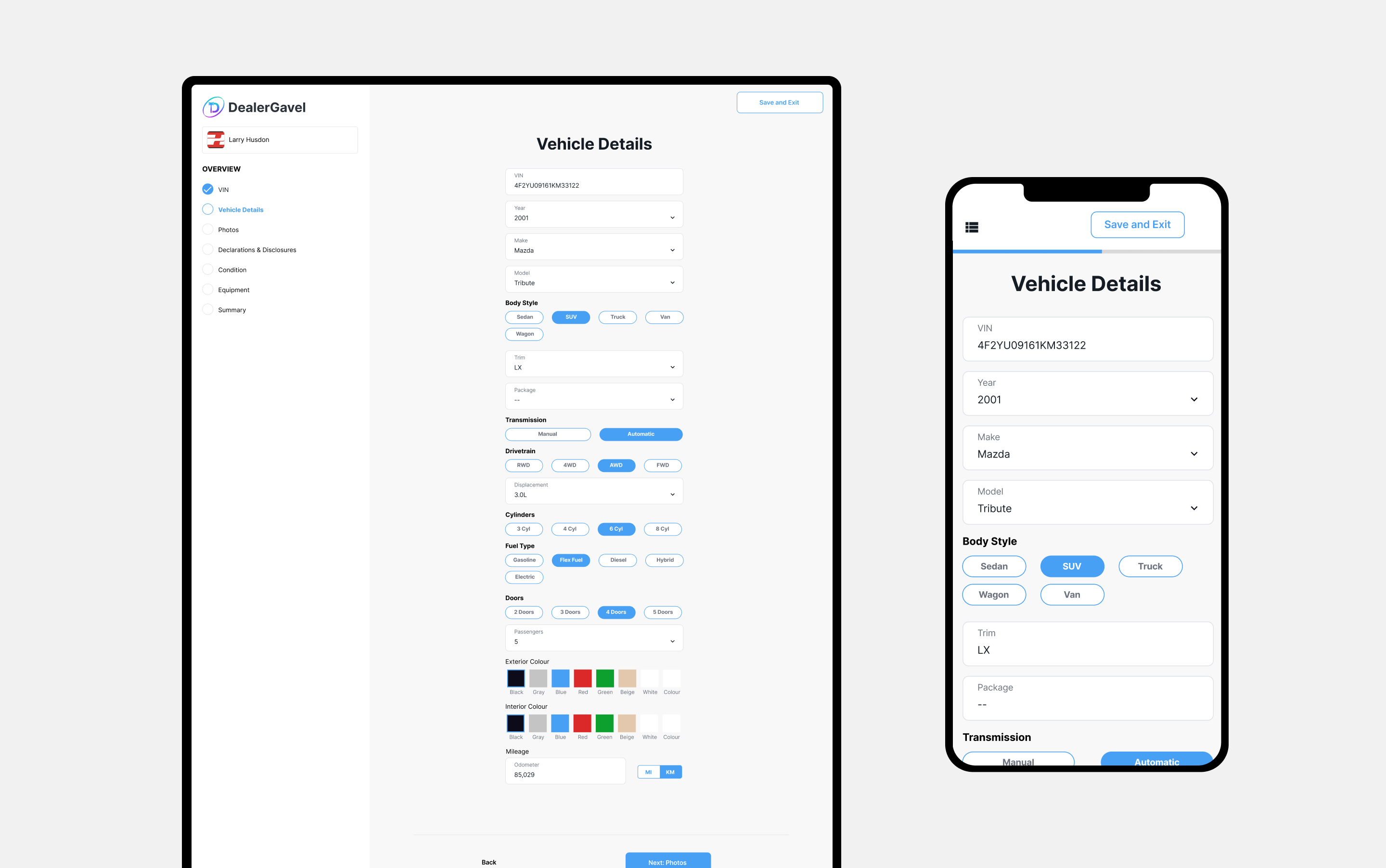
A photo is the first thing that captures a buyer's attention; in fact, inventory listings with 11+ photos generate more views and leads. We knew it was important for sellers to be able to utilize mobile devices when doing a vehicle capture, to make adding photos easy. Not only do sellers have to take a number of photos, they have to take the right photos. The photo capture wizard removes the guesswork for sellers, ensuring they take the necessary and correct types of images buyers are looking for.
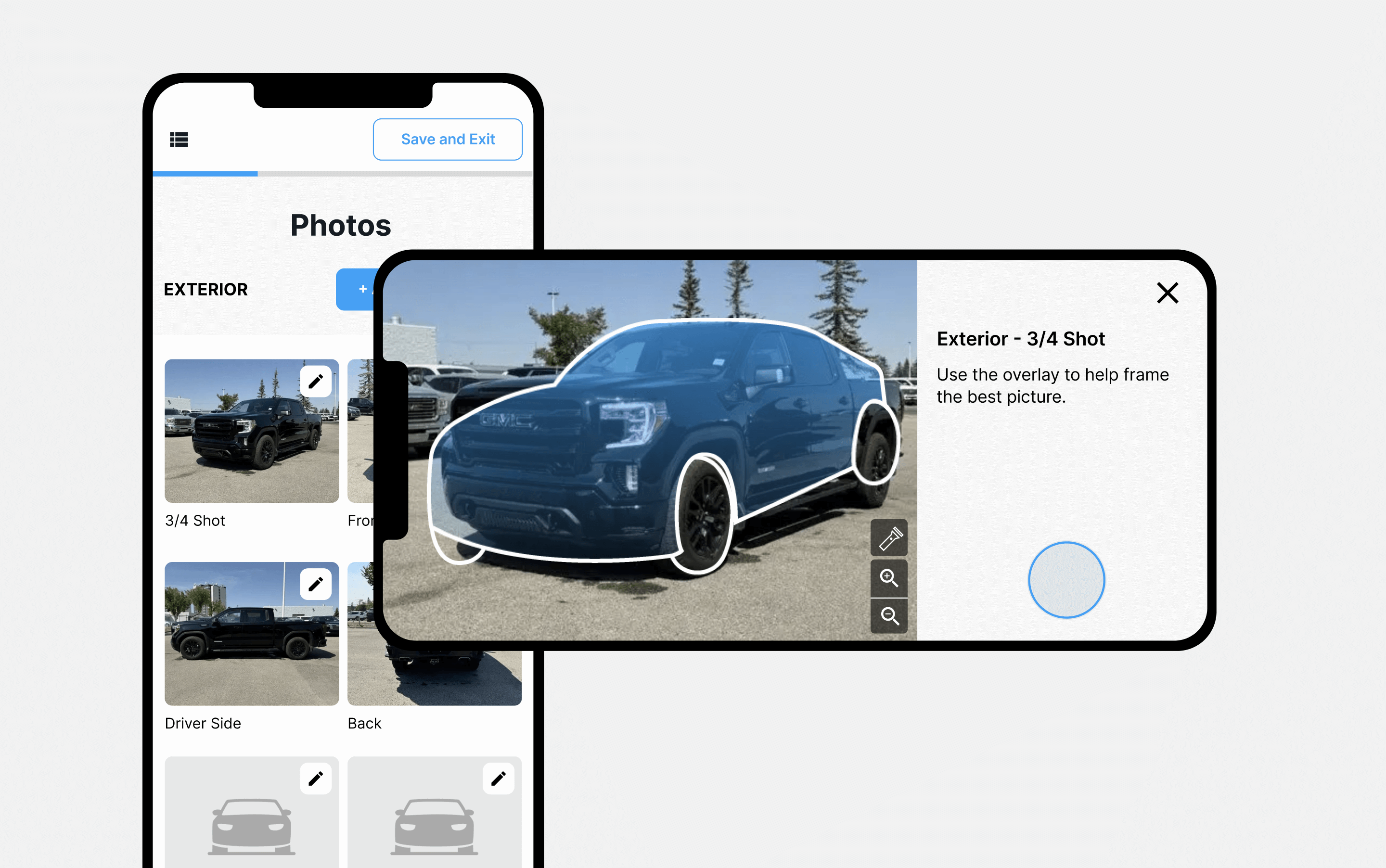
Creating a step-by-step workflow to add vehicle details broke down information into digestible pages and groupings. Workflow steps remained nearly identical from mobile to desktop, making it easy for users to complete various steps on the platform of their choosing. Working with the development team, we implemented a number of mechanisms for verifying that all necessary vehicle information was included, ensuring accuracy and completion before moving vehicles to auction.
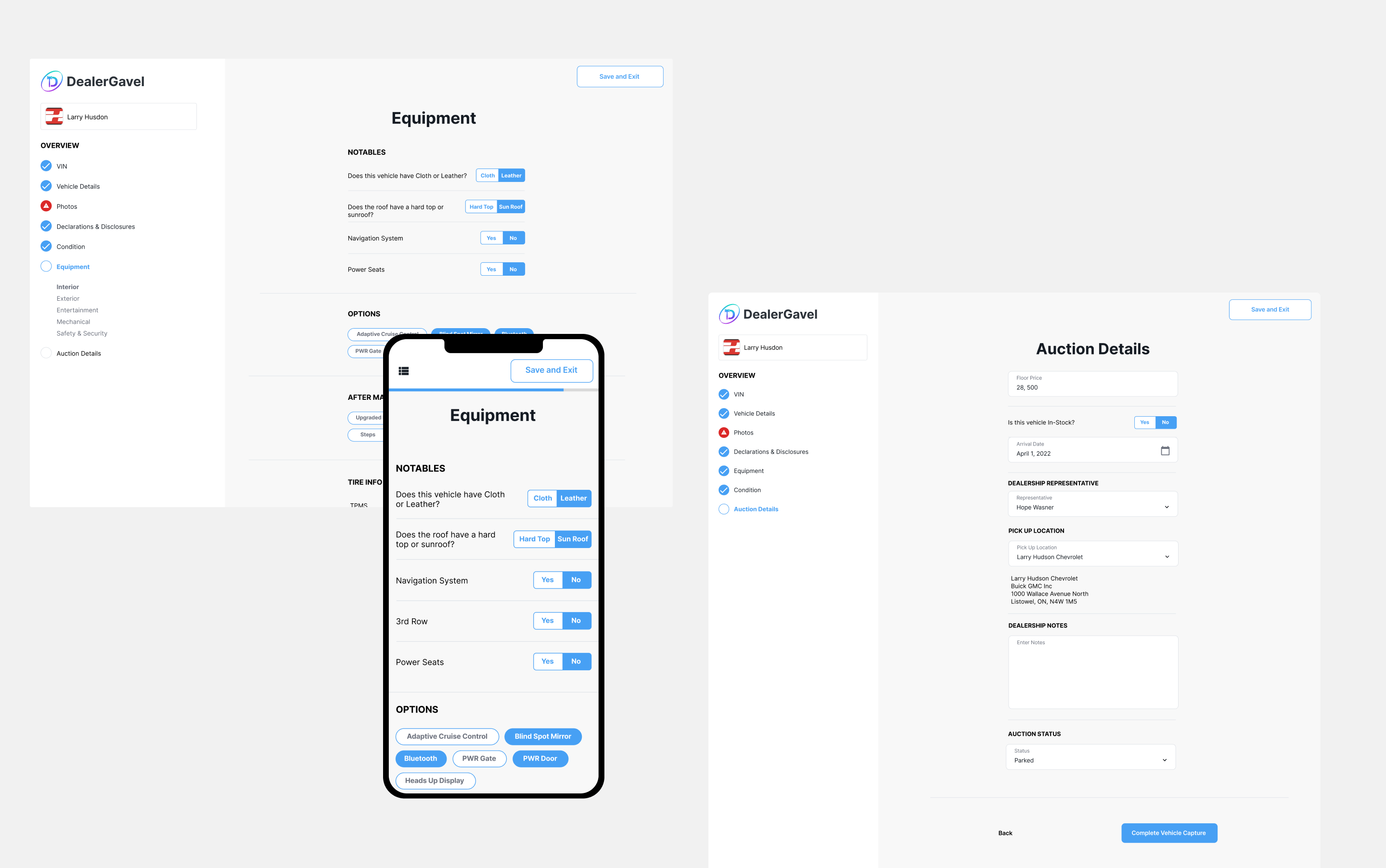
Once vehicles are added to the platform, the information is displayed on a vehicle details page. Typically, VDPs are literal web pages that a user has to navigate to. Wanting to keep users in the same workflow, Dealergavel’s VDPs were implemented into a drawer component. These drawers could display the hundreds of details available about a particular vehicle, while remaining compact and accessible from any page the vehicle exists on. Using a drawer system allowed buyers to act quickly and confidently, finding vehicle information in a few short steps, while bidding in real-time,
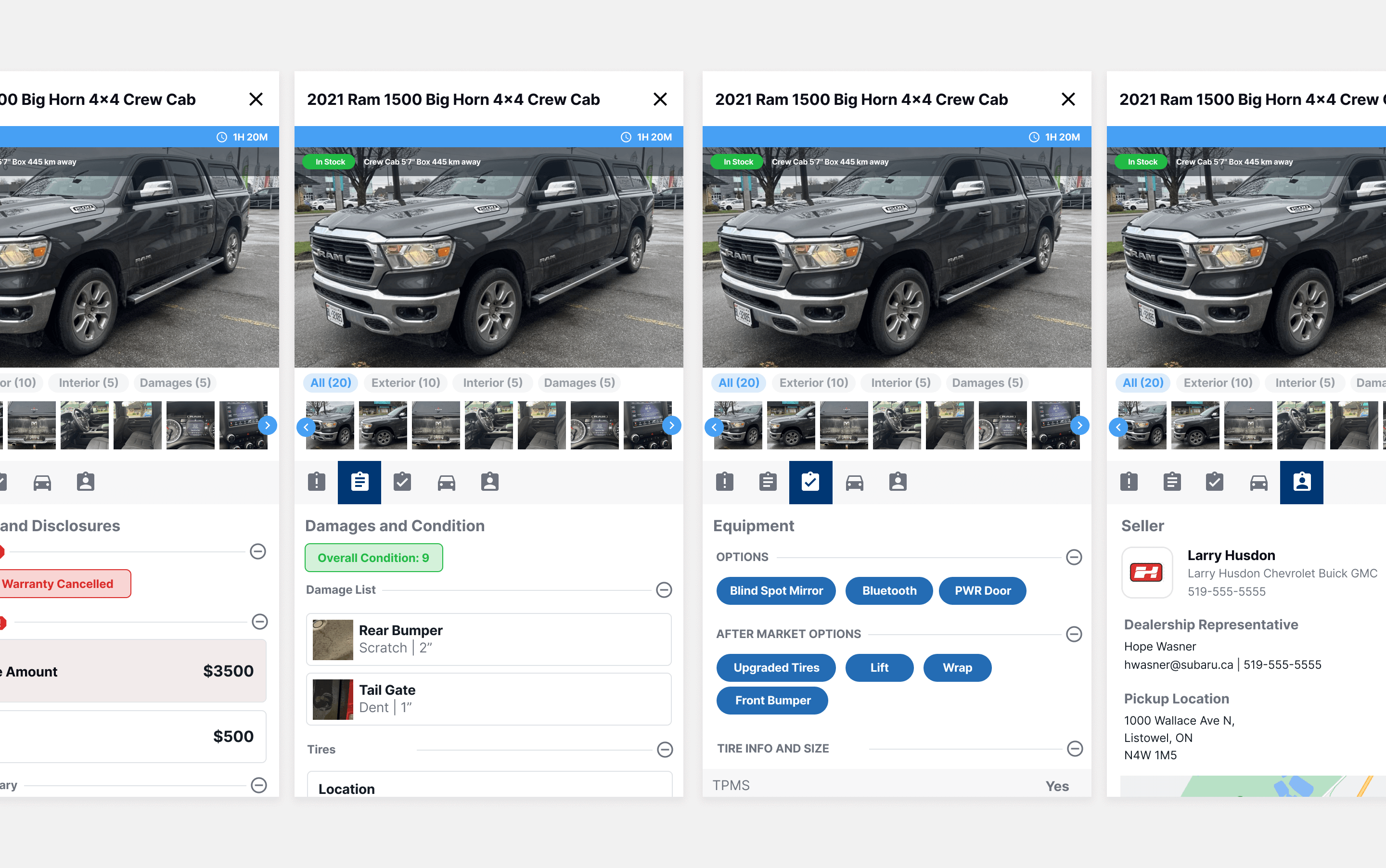
Dealergavel’s primary feature is the live auctions that allow dealerships to buy and sell inventory. Buyers needed a smooth bidding experience with clear information about current bids, bidding history, vehicle information, with preferred features like automatic bidding. Sellers needed to be able to monitor bids on their items in real-time, receive notifications of new bids, and manage bids effectively.
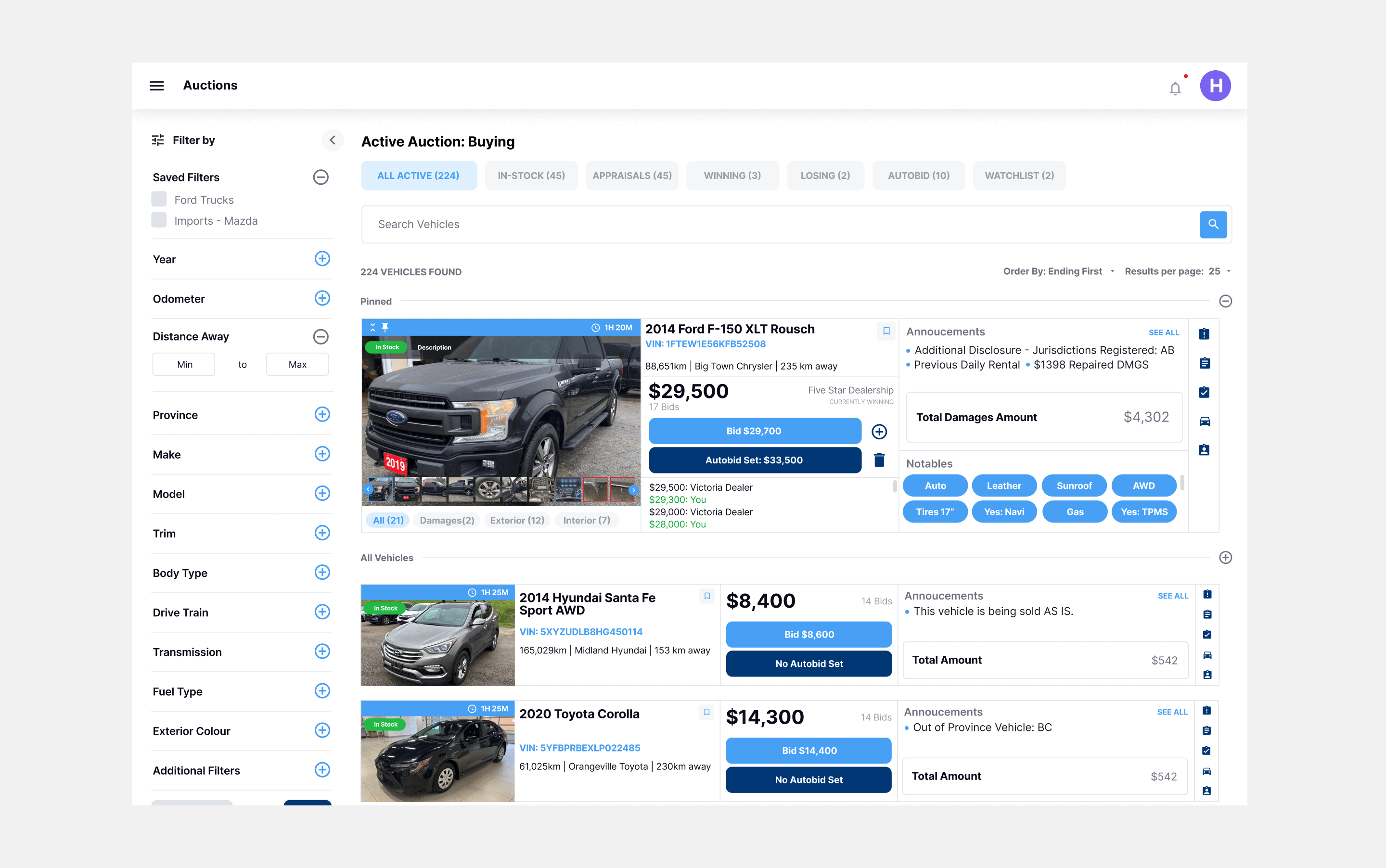
UI design for auctions was concentrated around one major challenge:
To present units efficiently in a way that buyers and sellers find useful, but at the same time include a number of features that improve ease of use, speed and accuracy that are integral to successful auction participation.
I set out to build a unit display that balanced the importance of quick navigability and information intensity, and this was accomplished in two ways:
For a vehicle auction, aesthetics were less important than functionality with the high concentration of textual material. Grouping relevant information, providing clear visual dividers and organizing key information made the vehicle display easy for users to use to scan and skim vehicle information. Colours were added to elements to draw attention to essential features.
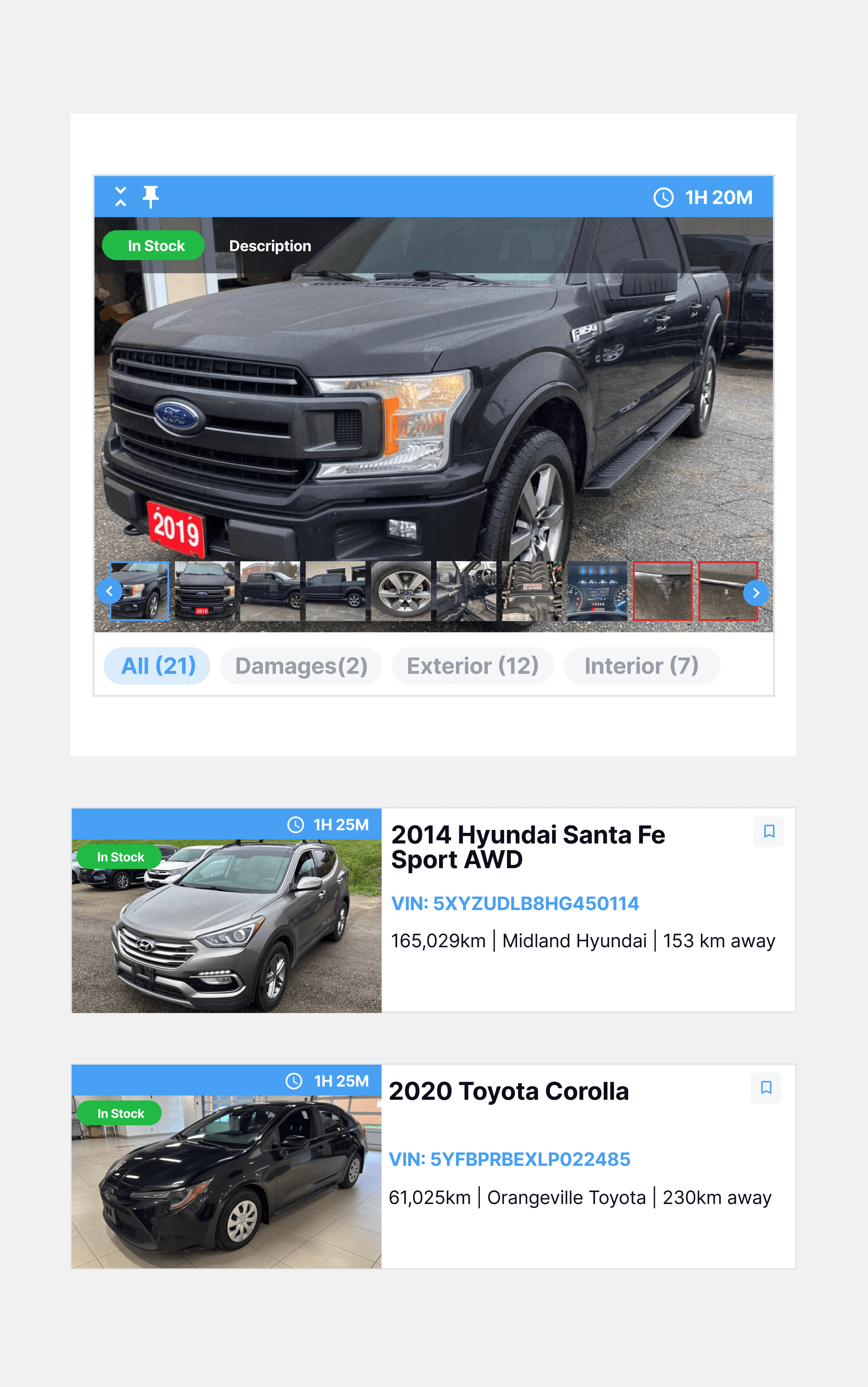
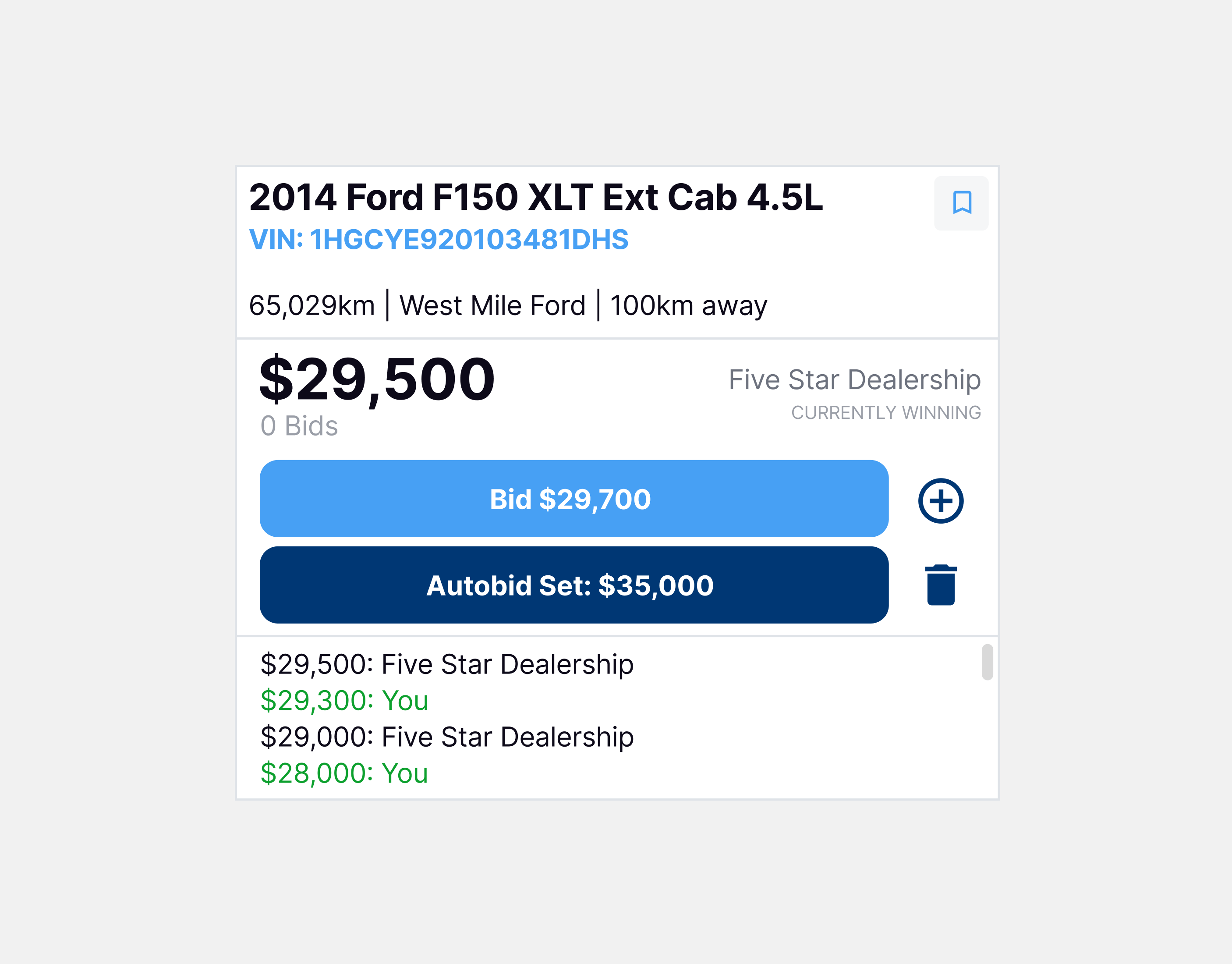
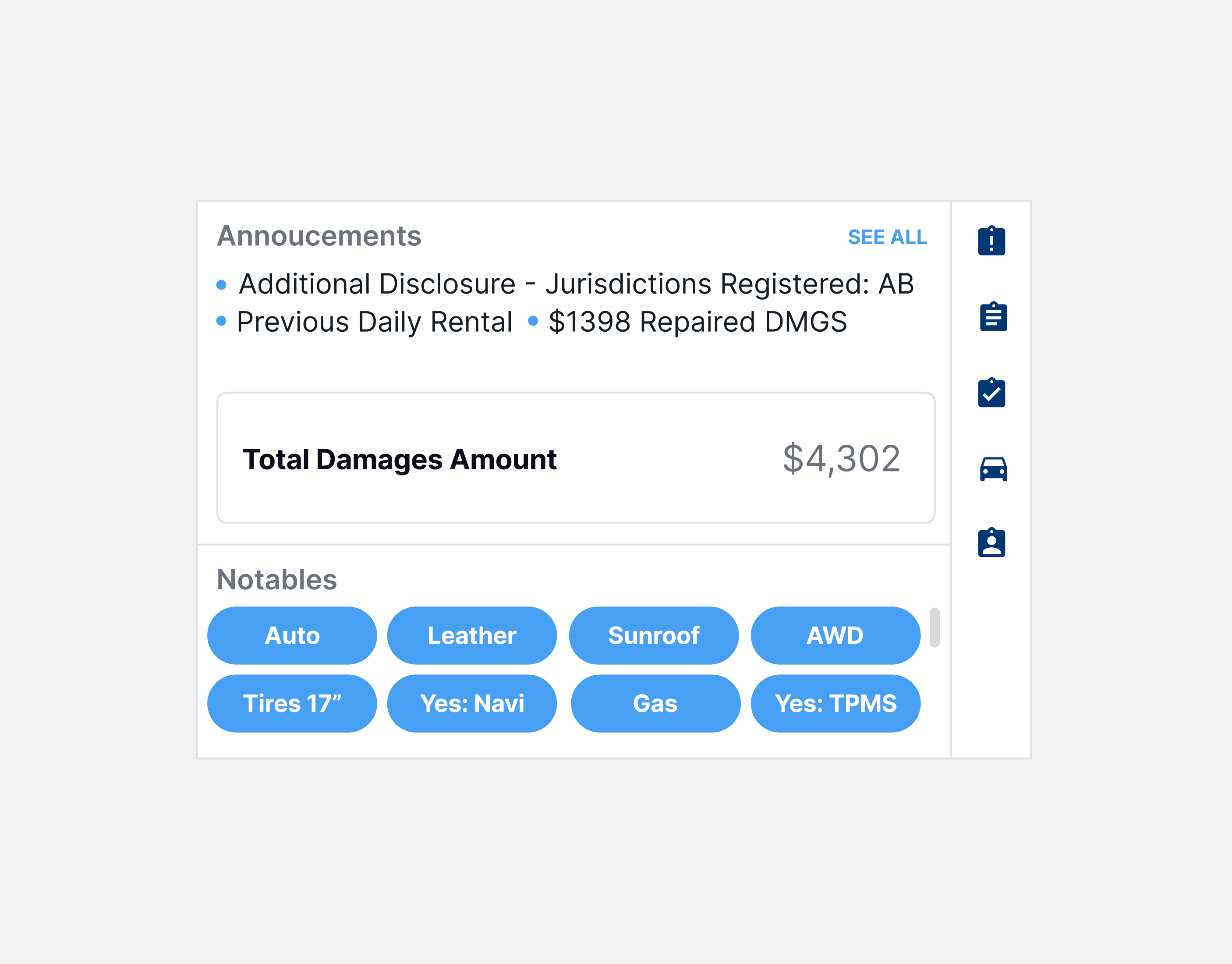
Even though the platform is made exclusively for dealership employees with high cognitive load tolerance, it was important to reduce workflow complexity. Features such as vehicle pinning, expandable vehicle display, and a VDP drawer ensured that each vehicle display presented necessary features with elements that supported efficiency and accuracy in a face paced and time restricted setting.
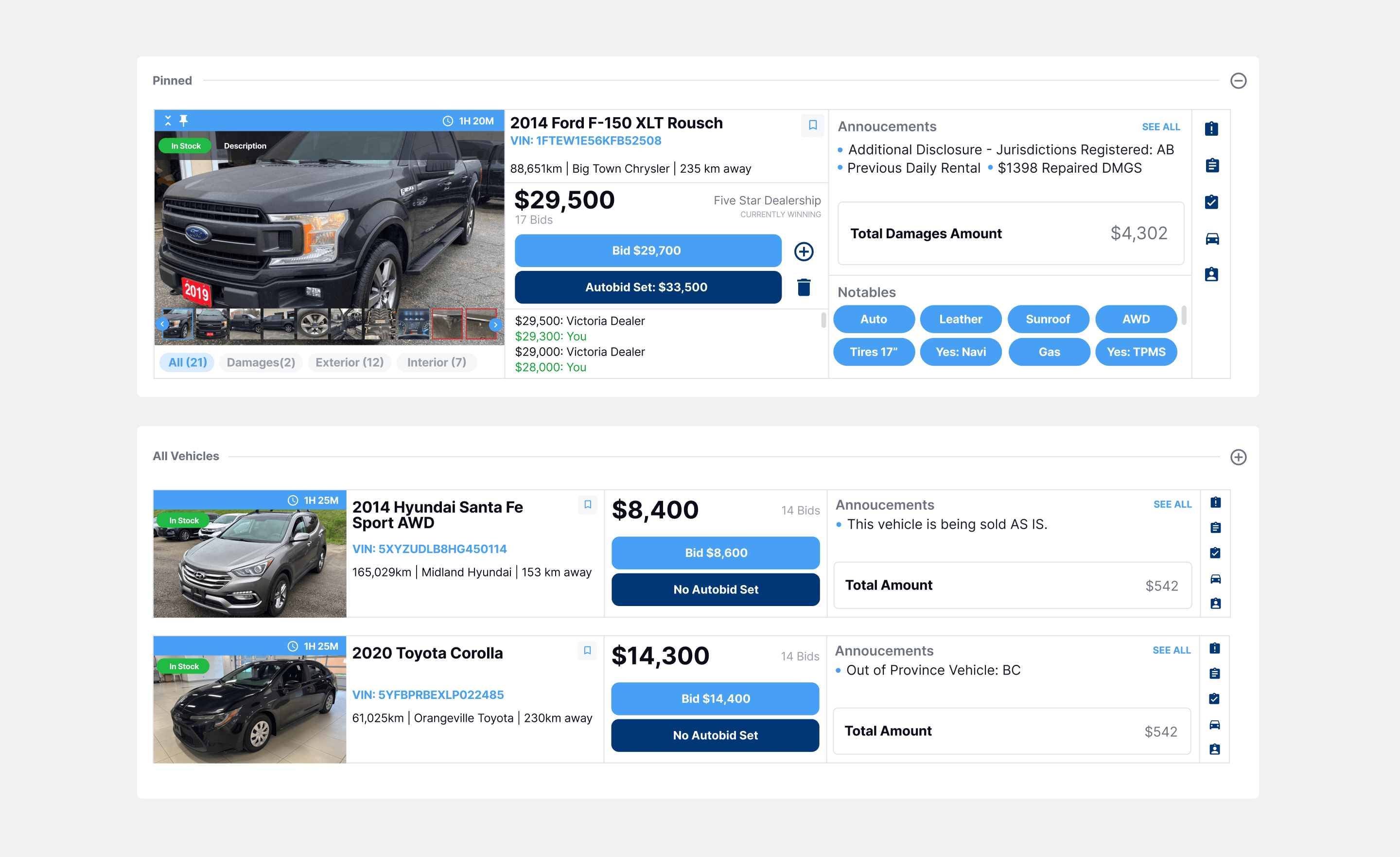
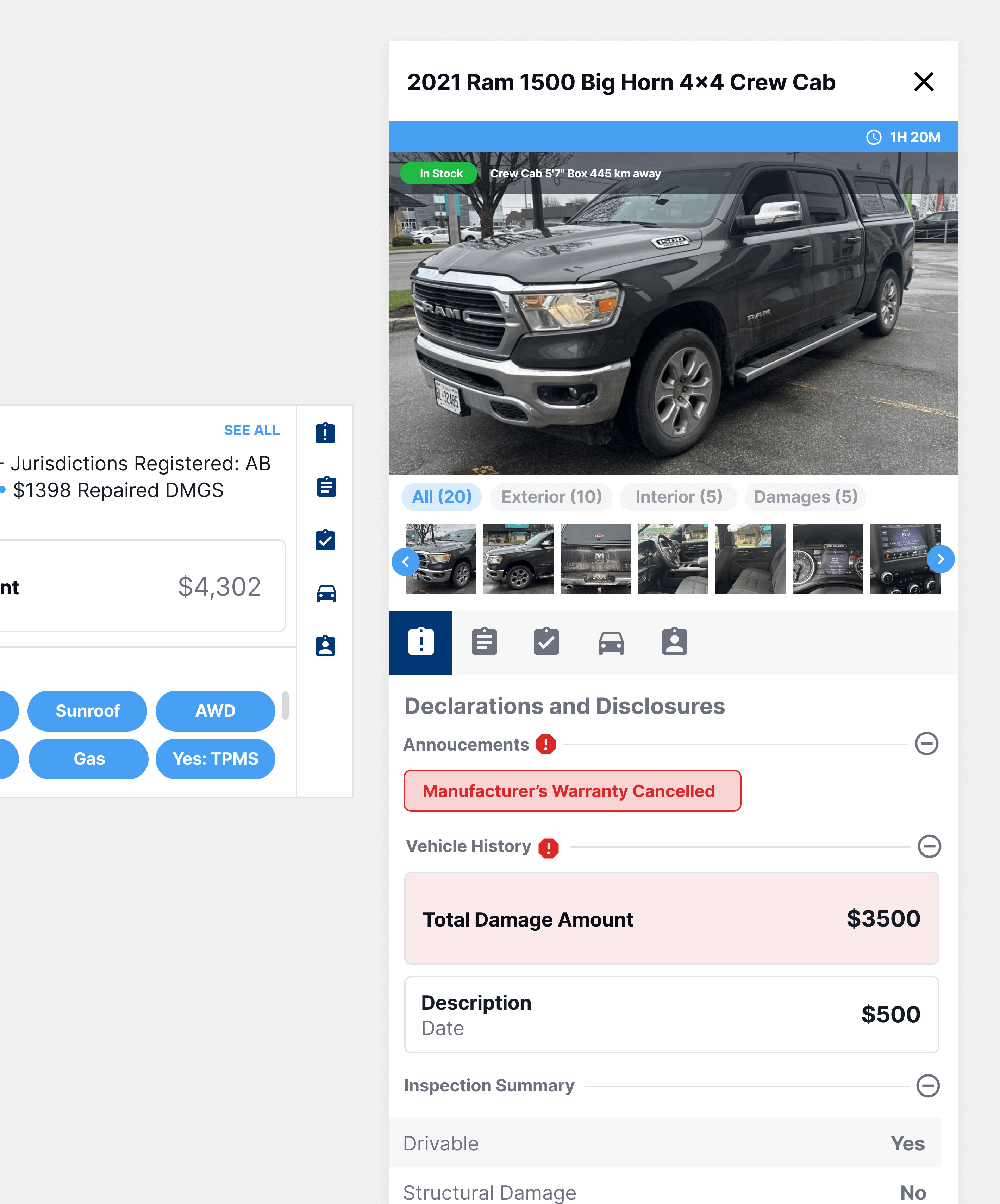
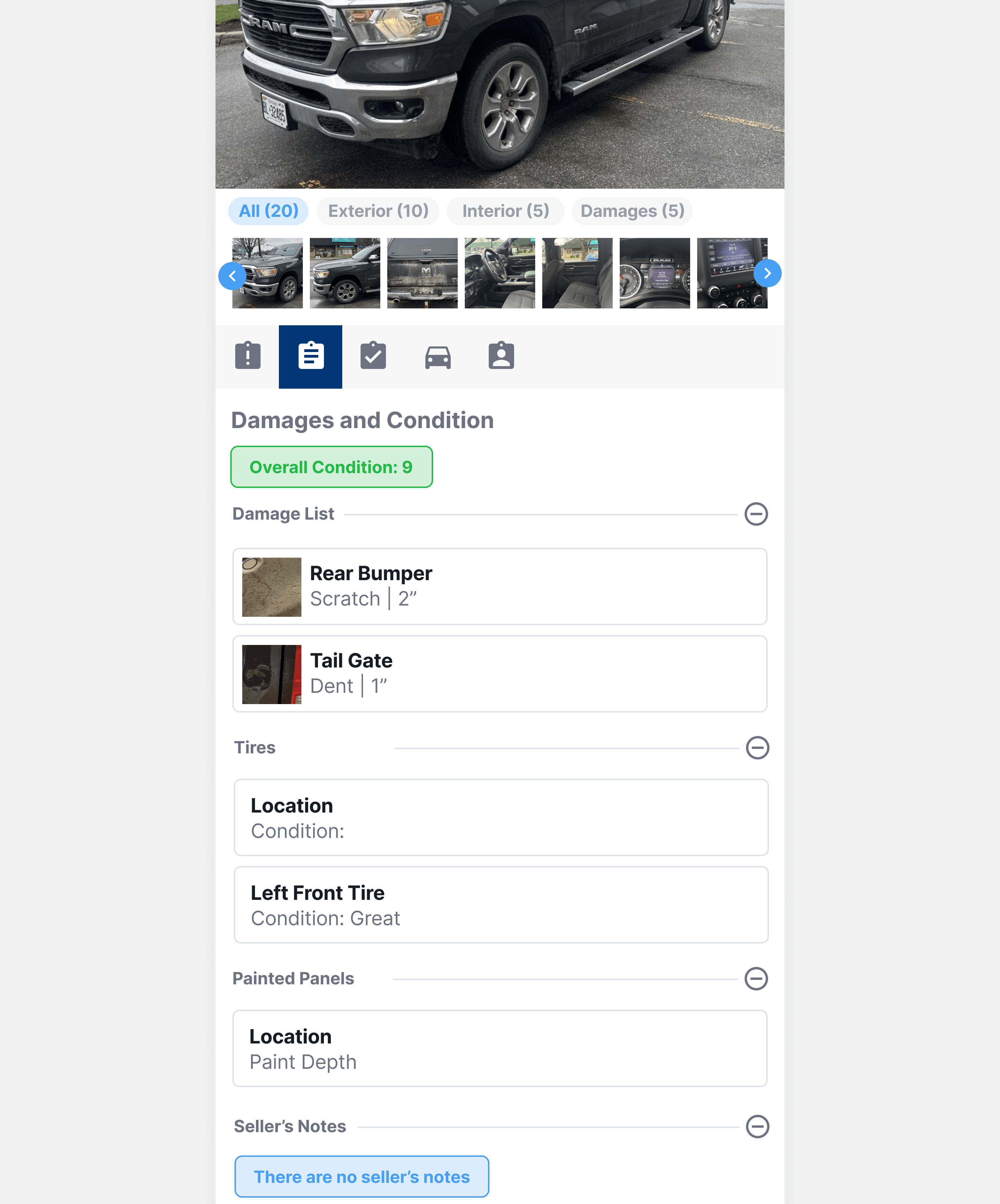
Post-Auction Vehicle pages enabled customers to view and manage all their purchases and sales throughout the entire post auction journey, in one centralized place.
We created an interface where vehicles were able to move through the post-auction flow automatically based on a number of factors, such as availability, reducing the amount of manual intervention needed from the sellers.
The interface also expands post-auction capabilities, such as providing a negotiation interface between buyers and sellers, significantly reducing effort in daily operations and time spent finalizing deals. A direct negotiation UI provided a unique feature to help stand out in a competitive market.
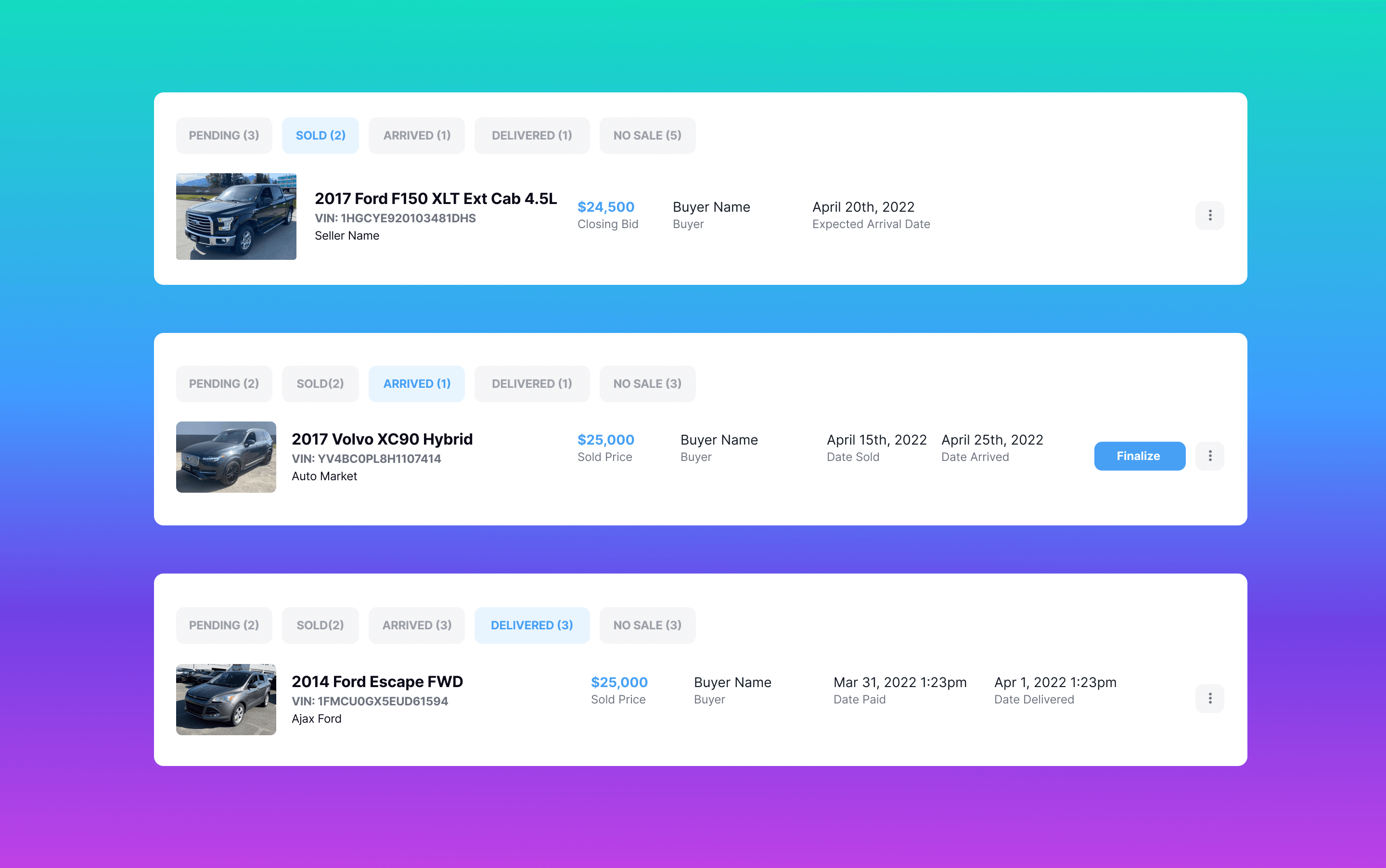
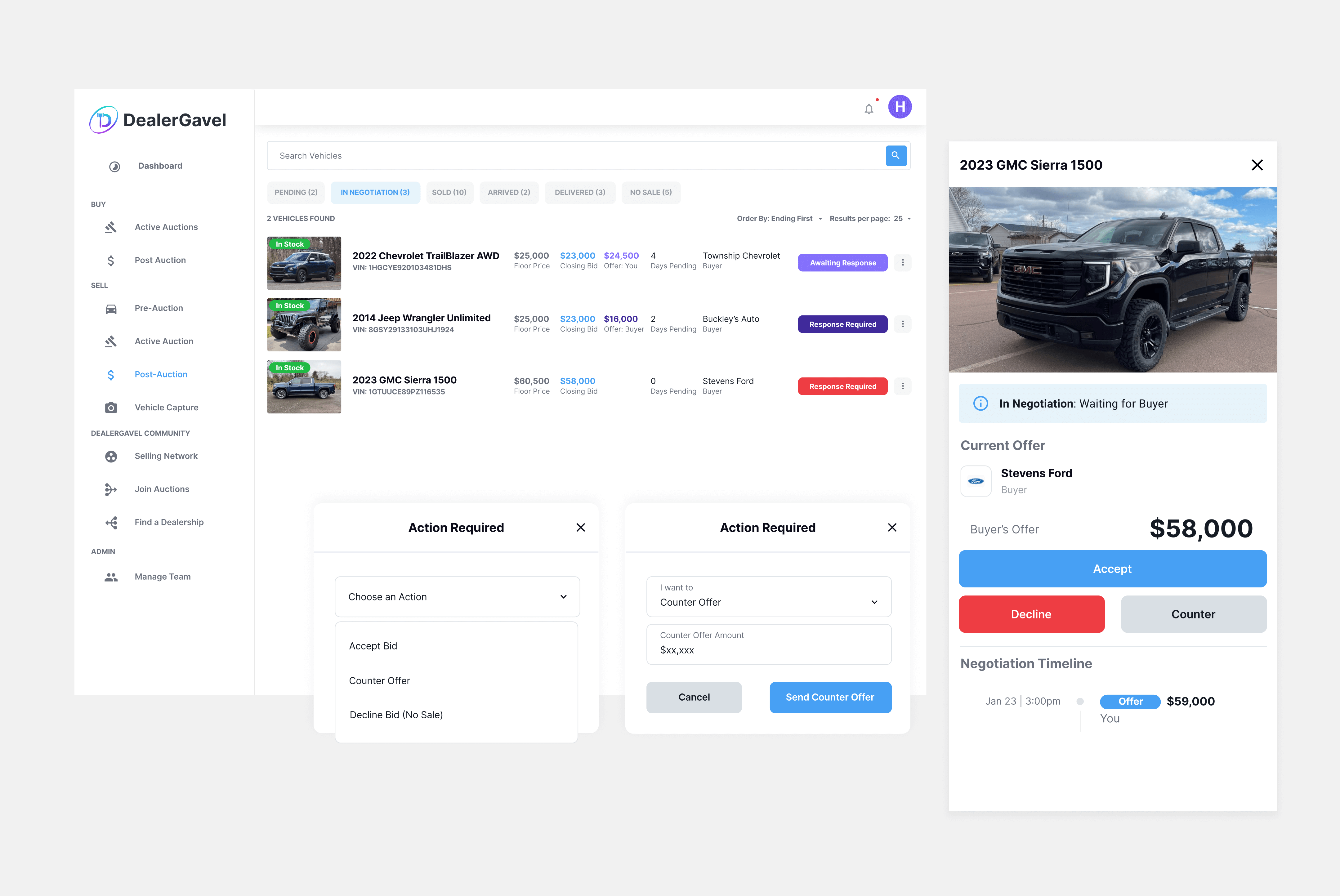
Creating a digital auctioning platform provided many challenges while trying to balance functionality with unique user needs. Many solutions were continually reviewed, discussed and reconsidered throughout the design and development process, to create a platform that brought dealerships together and supported their growth.
Setting up beta versions of the platform for various dealerships to explore has led to a number of dealerships signing on as we prepare the platform for a full release.
Focus on building MVPs. Many features had to be sidelined because of time and effort, it was important to focus on the features that can deliver the highest value for users.
User needs can trump design practices. Putting the user experience first was vital, even though it felt like I was not always choosing what looked best. Remembering to follow the usability heuristics helped to ensure I was choosing what worked best.